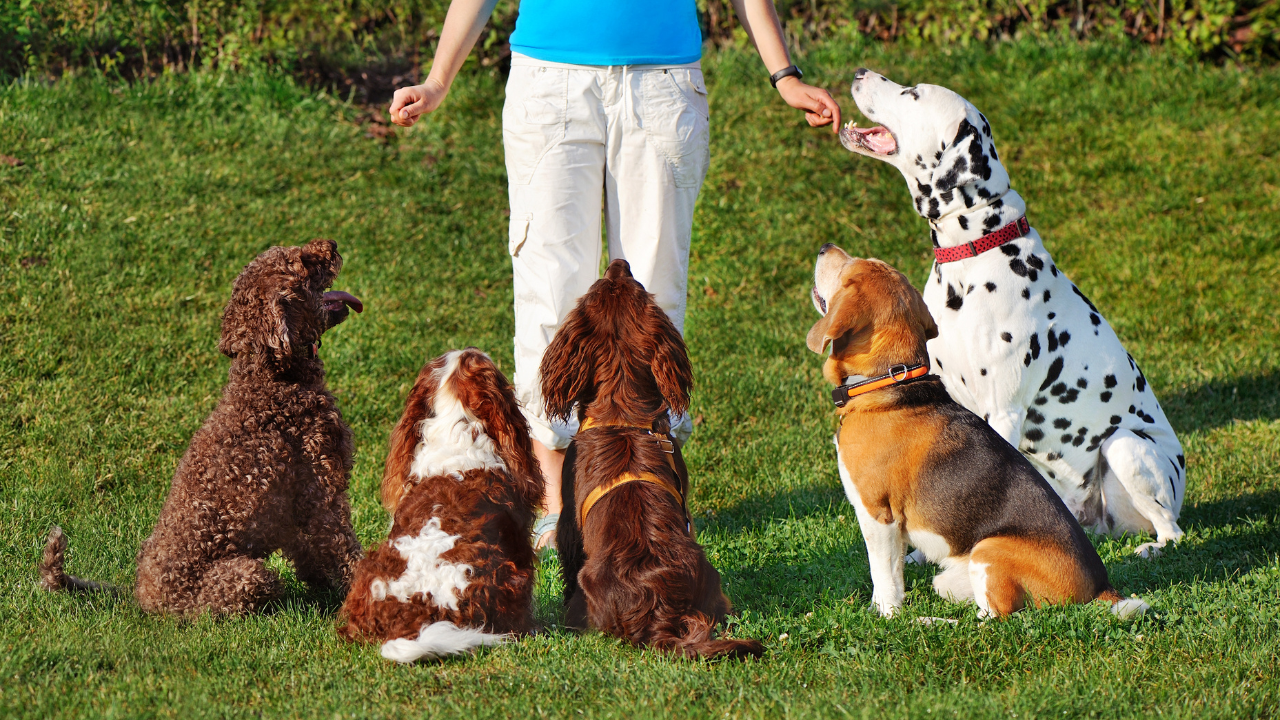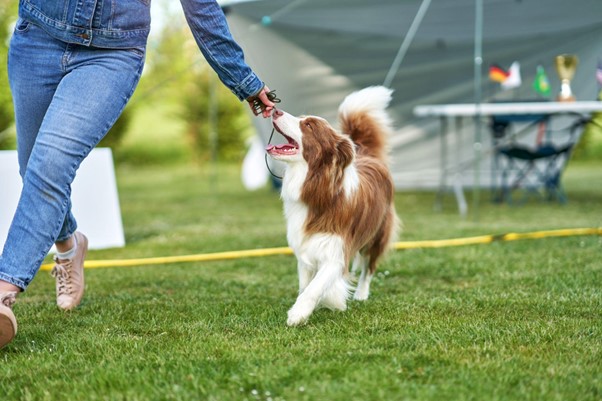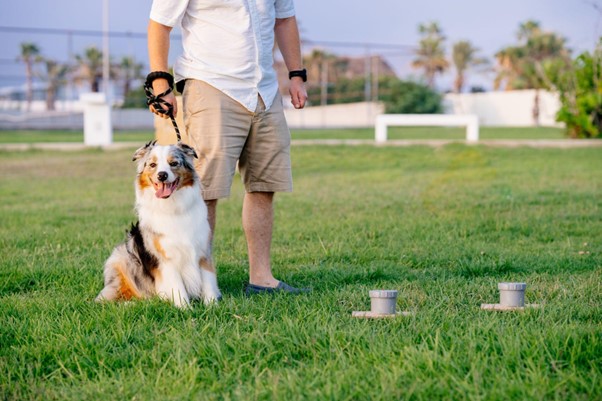5 Common Safety Hazards in Dog Training You Should Avoid

Ensuring safety in dog training is just as important as teaching obedience. Many trainers and pet owners unknowingly expose their dogs to avoidable risks, leading to stress, injury, or behavioral setbacks. From using the wrong training equipment to ignoring body language cues, these common safety hazards can hinder progress and harm your dog’s well-being. By understanding potential dangers and adopting safe training techniques, you can create a positive learning environment. Let’s explore five critical safety hazards and how to effectively prevent them in your training sessions.
How to Keep Your Dog Safe During Training Sessions
Ensuring your dog's safety during training sessions is crucial for their well-being and success. Using the right training equipment, such as a well-fitted harness and a sturdy leash, helps prevent injuries. Harsh methods like shock collars or choke chains can create fear and stress, making training ineffective. Instead, positive reinforcement techniques, like treats and praise, encourage better behavior. A secure, distraction-free environment is also essential for safe and productive training.
Monitoring signs of fatigue or stress is crucial during training. If your dog yawns, pants heavily, or avoids eye contact, they may need a break. Keeping sessions short and engaging prevents frustration. Using Effective Types of Dog Training, like positive reinforcement, enhances learning. Always consider weather conditions and provide fresh water for comfort and hydration.
Proper socialization is key, but should be done gradually. Not all dogs respond well to new environments or strangers, so introduce changes carefully. Observing body language cues helps prevent anxiety and unwanted behaviors. By focusing on safety, patience, and consistency, you create a positive training experience, strengthening your bond while improving your dog’s behavior and confidence.
5 Common Dog Training Mistakes to Avoid
Training your dog is essential for their obedience, behavior, and overall well-being. However, many dog owners unknowingly make mistakes that can slow progress or create confusion. By recognizing and correcting these common training errors, you can ensure a positive and effective learning experience for your furry friend.
1. Inconsistency in Commands and Reinforcement
Dogs thrive on consistency, yet many owners unintentionally confuse their pets by using different words for the same command. Saying “come” one day and “here” the next can leave your dog unsure of what to do. Similarly, rewarding bad behavior or failing to reinforce good behavior consistently can slow progress. To avoid this, always use clear and consistent commands and reinforce desired behaviors with treats, praise, or affection.
2. Using Punishment Instead of Positive Reinforcement
Harsh corrections like yelling, leash jerks, or punishment-based training can create fear and anxiety in your dog. Instead of learning what to do, they may associate training with stress. Positive reinforcement, such as treats, praise, and toys, is far more effective in encouraging good behavior. Rewarding your dog when they obey strengthens their understanding and trust, leading to better training outcomes.
3. Training Sessions That Are Too Long or Too Short
A common mistake is either overwhelming or under-stimulating your dog during training. Sessions that are too long can cause frustration, while those that are too short may not allow your dog enough time to learn. The ideal session should last 10-15 minutes, focusing on one skill at a time to keep your dog engaged and motivated.
4. Neglecting Socialization and Real-World Training
Many dog owners focus only on basic commands at home without exposing their pets to different environments. Without proper socialization, dogs may become fearful or reactive in new situations. To prevent this, gradually introduce your dog to new people, animals, and environments to help them develop confidence and good manners.
5. Expecting Instant Results and Skipping Reinforcement
Patience is key in dog training, yet some owners expect immediate obedience and get frustrated when progress is slow. Learning takes time, and skipping reinforcement can lead to setbacks. Always reinforce good behavior and practice commands regularly. Remember, training is a lifelong process that requires patience, consistency, and positive encouragement.
Expert Tips for Training Your Dog Safely and Effectively

Training your dog requires patience, consistency, and the right approach to ensure safety and success. Using positive reinforcement techniques and avoiding common mistakes will help you build a strong bond while teaching obedience. Here are six expert tips to train your dog safely and effectively.
- Use Positive Reinforcement for Better Results:
Dogs respond best to reward-based training, which encourages them to repeat good behavior. Use treats, praise, and toys to reinforce commands and build trust. It is best to avoid punishment, as it can cause fear and confusion. Instead, redirect unwanted behavior and reward positive actions immediately.
- Keep Training Sessions Short and Focused:
Training should be engaging, not exhausting. Dogs learn best in short sessions of 10-15 minutes, repeated throughout the day. Overly long sessions can lead to frustration and a lack of interest. Similarly, structured learning, like short grooming courses, ensures effective skill development without overwhelming your pet. Always end on a positive note to keep your dog motivated for the next session.
- Be Consistent with Commands and Rewards:
Consistency is key to successful training. Use the same commands, hand signals, and rewards every time to prevent confusion. If multiple family members are involved, ensure everyone follows the same training techniques to reinforce learning effectively.
- Train in a Safe and Controlled Environment:
Start in a quiet, distraction-free space before introducing new challenges. A secure training area prevents accidents and distractions, making it easier for your dog to focus. Gradually increase the difficulty by adding new environments, noises, and obstacles to strengthen obedience.
- Watch for Signs of Stress or Fatigue:
Dogs, like humans, can feel overwhelmed or tired during training. If your dog starts panting excessively, yawning, or avoiding eye contact, they may need a break. Pay attention to their body language and keep training sessions fun, stress-free, and positive.
- Socialize Your Dog in a Controlled Manner:
Early socialization helps your dog become confident and well-adjusted. People, animals, and environments should be introduced gradually. Always ensure interactions are positive and safe, rewarding calm behavior. Proper socialization reduces fear, aggression, and anxiety in unfamiliar situations.
The Benefits of Avoiding Safety Hazards in Dog Training
Ensuring safe training practices is essential for your dog’s well-being, confidence, and obedience. Many dog owners overlook potential training hazards, which can lead to injuries, fear, or ineffective learning. By prioritizing safety, you create a stress-free training experience that strengthens your bond with your dog. Here’s why avoiding safety hazards in dog training is so important.
1. Prevents Injuries and Discomfort
One of the biggest benefits of safe dog training is reducing the risk of injuries. Using well-fitted collars, harnesses, and leashes prevents choking or strain on your dog’s neck. Additionally, training in a secure, hazard-free environment ensures they don’t slip, trip, or run into dangerous obstacles.
2. Builds Confidence and Trust
When training is done in a safe and positive way, your dog becomes more confident in their abilities. Harsh corrections, improper leash handling, or sudden negative experiences can cause fear and anxiety. By using positive reinforcement techniques and ensuring a safe training environment, your dog will trust you more and enjoy learning.
3. Increases Training Effectiveness
Dogs learn best when they feel secure and comfortable. If your dog associates training with stress or discomfort, they may resist learning new commands. A safe and supportive training environment helps them focus better, making training sessions more productive and enjoyable for both of you.
4. Strengthens the Dog-Owner Bond
A safe training approach fosters a stronger bond between you and your dog. When your dog trusts that training is positive and rewarding, they respond better to commands. Learning to correctly approach a dog with patience builds trust, while reward-based methods make obedience training smoother, more effective, and stress-free.
5. Reduces Behavioral Issues
Unsafe training methods can lead to fear-based behaviors, such as aggression, excessive barking, or avoidance. When safety hazards are eliminated, your dog learns in a calm, structured way, reducing stress-related issues. Safe training ensures better long-term behavior and a well-adjusted dog.
Ensure Safe Training Practices with PDGA Courses

Training your dog requires proper techniques and safety awareness to prevent stress or injury. At PDGA, our courses go beyond grooming—we also cover essential topics such as basic dog obedience and training techniques, understanding canine body language, and mastering various handling methods. These skills are invaluable for both dog groomers and pet owners, ensuring a safer and more positive experience for every dog. PDGA allow for flexible learning, making it easier to develop effective training skills from the comfort of your home.
By enrolling in PDGA-certified programs, you gain valuable skills in effective training techniques while ensuring a safe and supportive environment for dogs. With online dog training practice programs, both groomers and pet owners can enhance their knowledge and skills at their own pace, ensuring a structured and successful training journey for every dog.
Conclusion
Avoiding safety hazards in dog training is crucial for ensuring effective learning, injury prevention, and a positive training experience. By using proper techniques, safe environments, and positive reinforcement, you can build trust and confidence in your dog. Additionally, recognizing stress signals and training limits helps prevent setbacks and strengthens your bond. A safe and structured training approach leads to better obedience, fewer behavioral issues, and a happier, well-adjusted dog. Prioritizing safety ensures that every training session is productive, enjoyable, and stress-free for both you and your furry companion.



